It is a warm morning in Kyoto and we rush to the station to catch our train to Nara Prefecture. It is our first tea garden visit after three years of pandemic break. We promptly forget our notepad and pen, so we go back to the room once more. Excitement is in the air, but positive excitement, anticipation.
At the train station not far from the Suikyo Tea Garden we are warmly welcomed. Rain is forecast for the afternoon, so we agree to go to the tea gardens first and then sit down to eat and talk afterwards. A fortnight ago, when we discussed our travel plans on the phone, Luna had announced that the harvest could possibly begin on the day of our trip. At that time it was exceptionally warm. But since there was another cold spell in between, the harvest is not so early after all and is supposed to start in the next few days. Fumiaki says that in the 20 years he has been producing tea, there has never been such an early year with the original plan. Due to the cold snap, the harvest time this year is now comparatively normal to slightly earlier, as our partners in Kyushu have also reported.
The weather in Nara this spring has been really exceptional. First very warm, then sudden thunderstorms with ping pong ball-sized hailstones, then it got warm again and now cool again for a short while. Fortunately, there was no frost damage. On the one hand, this was due to good preparations. In the last few years, we invested in fans to protect the plants from the sinking air, but on the other hand, it didn’t get that cold after all.
Suikyo has some customers who are really looking forward to the shincha, i.e. the new tea. Envelopes have already been prepared for these customers so that the tea can be sent directly at the end of the harvest and processing day. Luna arranges with us that we will also receive such an envelope and asks us about our accommodation for the next few days. We are already excited to taste, because so far we have mainly known the teas that they let mature first and only then release for sale. They describe that the fresh Shincha still has a certain pungency, but it fades quickly, so that this taste can only be experienced for a short time. For us, too, this is what makes shincha so special – also from the other farms from which we receive shincha every year.
Driving to the first plot for our tour today, named Miyayama, we pass the border between Nara and Kyoto Prefecture in both directions. The tea garden is located right on the mountain, the ridge being the prefectural border. It is one of the oldest gardens in Suikyo, which has been cultivated organically since 1984. It is one of those plots that are difficult to farm because the slope is extremely steep. Most farms abandon such gardens because the work is too arduous, Fumiaki is even planting new tea hills. He describes to us that root growth is quite different on the slope and that even the cuttings-grown plants develop deeper roots on such sites. This tea mountain is slightly tilted to the southeast, so that it receives early sun, while from the west trees protect the plants from cold winds. Because of these special conditions, this is the first tea garden that can be harvested. So this is where our little shincha sample will come from. It is also interesting to note that the Sae Midori bushes, which grow slightly to the southwest, are even slightly less sprouted than the Yabukita bushes, which grow to the southeast. Actually, Sae Midori is considered an earlier shrub variety, while Yabukita marks the zero point, i.e. standard. Accordingly, the microclimate has a considerable influence on plant growth.

Of course, the microclimate also includes the soil conditions. Because the tea garden here has been cultivated by them for so long, the soil life is very active. The grasses and leaves that were spread for fertilisation last year have already completely rotted away. Fumiaki also describes that you can find the texture of the smell of the soil in the tea. It is not about the actual smell, but, for example, where the smell is perceived. For Miyayama, the smell is more likely to be perceived at the front of the nose. These teas are considered by Suikyo to be rather easy to understand. As a comparison, he mentions the smell of Yakkendo, the plot from which our Woodwind comes. Here, the soil is loamy and the smell of the earth is perceived deeper in the throat. Teas from such sites are somewhat more complex in taste. Fumiaki’s goal is to bring out the landscape form and also the soil composition in the respective tea. The team approaches new projects with great openness and a willingness to experiment. They say that due to climate change it is not clear anyway how the climatic conditions will develop in the future, so they try out many things and also observe how the plants develop over the years and what they are best suited for. Their tea production can be described as an interplay of nature, ideas and the reality of production. They benefit from the fact that the farm includes many very different plots, so that the team has a lot of material for comparisons. In contrast to normal organic farms, which have fertiliser management based on soil laboratory analyses, Suikyo is all about the cycles of nature and the artistic skill to bring out these cycles in the tea.

The age of the tea bushes also has an influence on the taste. With regard to the balance of umami and amami, Fumiaki describes that the older bushes tend to have a stronger amami, i.e. a much more pronounced sweetness. This is mainly due to the thicker and deeper roots, which can store more carbohydrates. Also, the influence of fertilisation is no longer as strong in the older bushes, which also means that fertilisation can no longer increase the umami taste. This is one of the reasons, apart from the somewhat lower yield, that in most gardens the shrubs are replaced after 30 to 40 years. Fumiaki’s ideal taste, however, is actually more of a sweet, fragrant tea. The old plants are ideal for this.
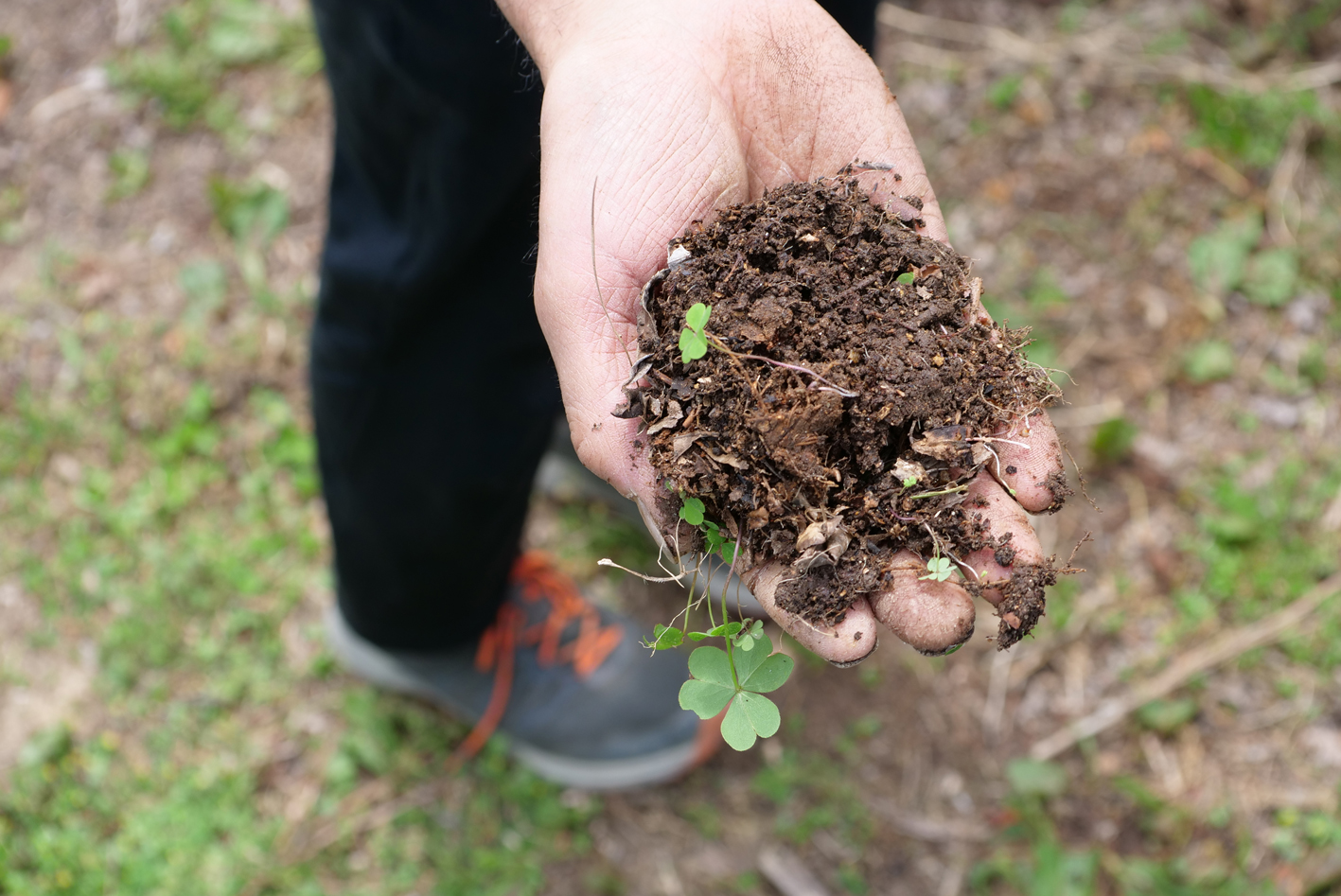
Before we go to the small tea factory, we take a look at the plot where the Okumidori and Yabukita varieties grow for Suikyo Asamidori. Both varieties were cut down deeply in June last year. Here Fumiaki explains to us the difference between gajû (“shoots heavy”) and gasû teas (“shoots number”). Tea bushes are called gajû if they have few thick branches shortly after being cut down and the new shoots can form large leaves because of little light competition. Gajû teas have an intense flavour, while the fragrance comes from the taste, so it can be perceived rather deeply. The taste remains perceptible in the mouth for a long time. Tea bushes that grow many thin branches and then many shoots with small leaves due to light competition are called gasû. Gasû teas are light, fragrant teas in which the taste develops from the smell. You could say they are teas with distinct top notes that quickly rise to the nose when you drink them. A cycle always goes from gajû, one year after pruning, to gasû, i.e. very densely branched bushes, and then again from the beginning. After down pruning, one speaks of a gajû tea, while densely branched bushes produce a gasû tea. To get a balanced tea again, Fumiaki wants to mix in some Oku Midori from another field this year, which will produce more of a gasû tea.

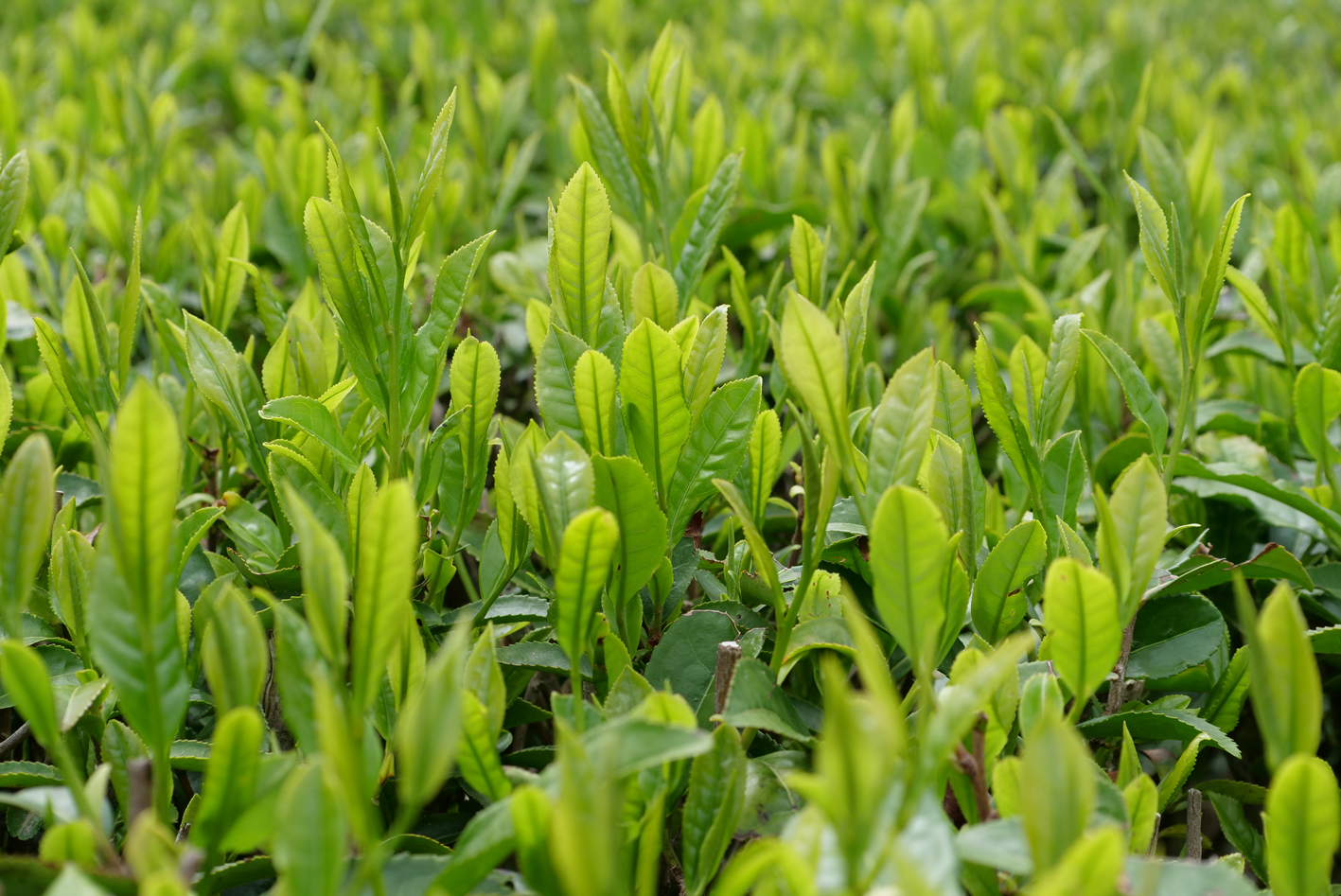
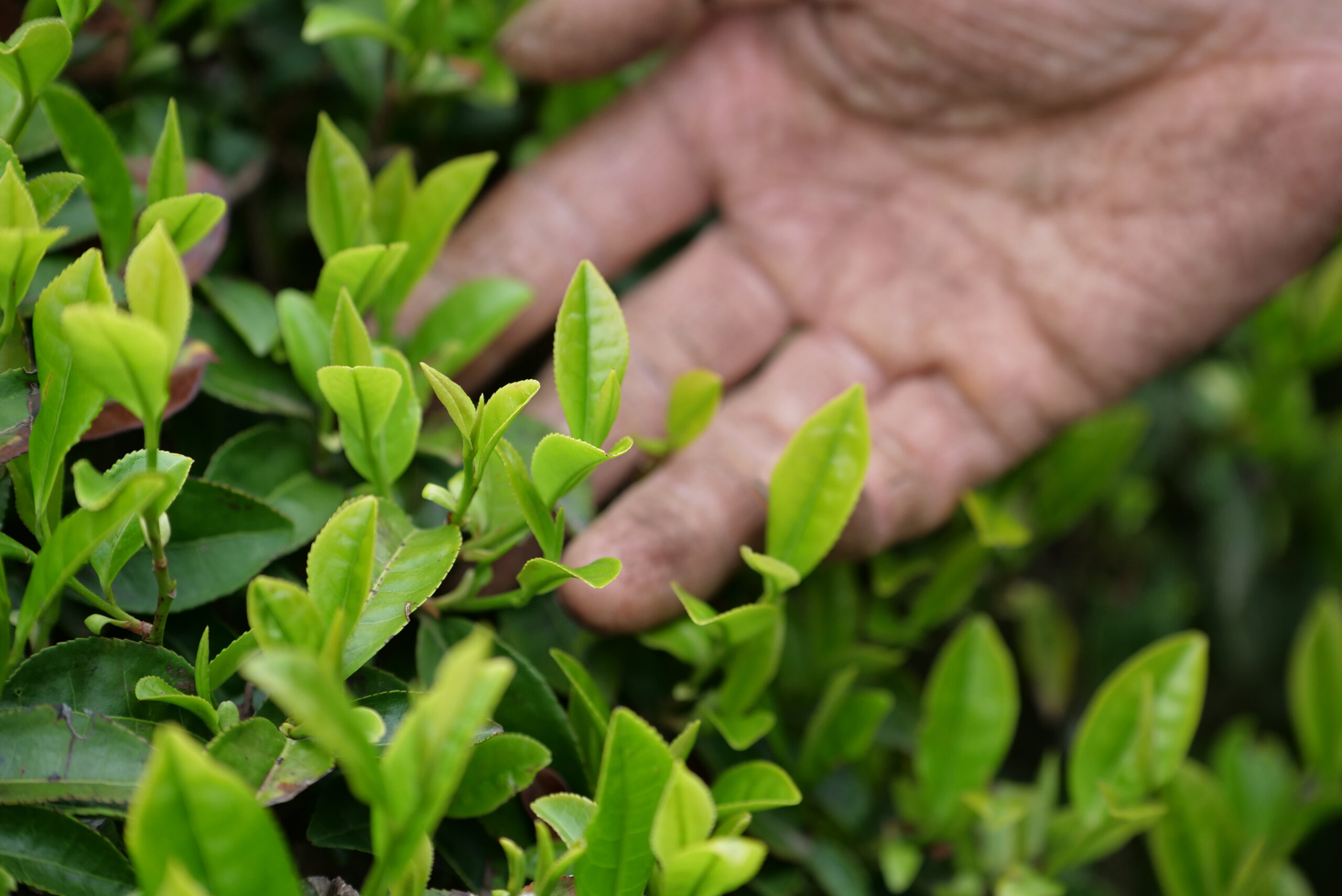
In the tea factory, everything is already prepared for the harvest season that is about to begin. The interesting thing about this tea factory is its versatility. Although the factory is not large, it is possible to produce Sencha, Kamairicha and Mushi-sei Tamaryokucha. In an adjoining room there are also facilities for black tea production. In black tea production, too, various production processes are possible, from light yellow black teas to deep red black teas. Much of the equipment is self-built. There are no suitable machines for experimental work and own processes.
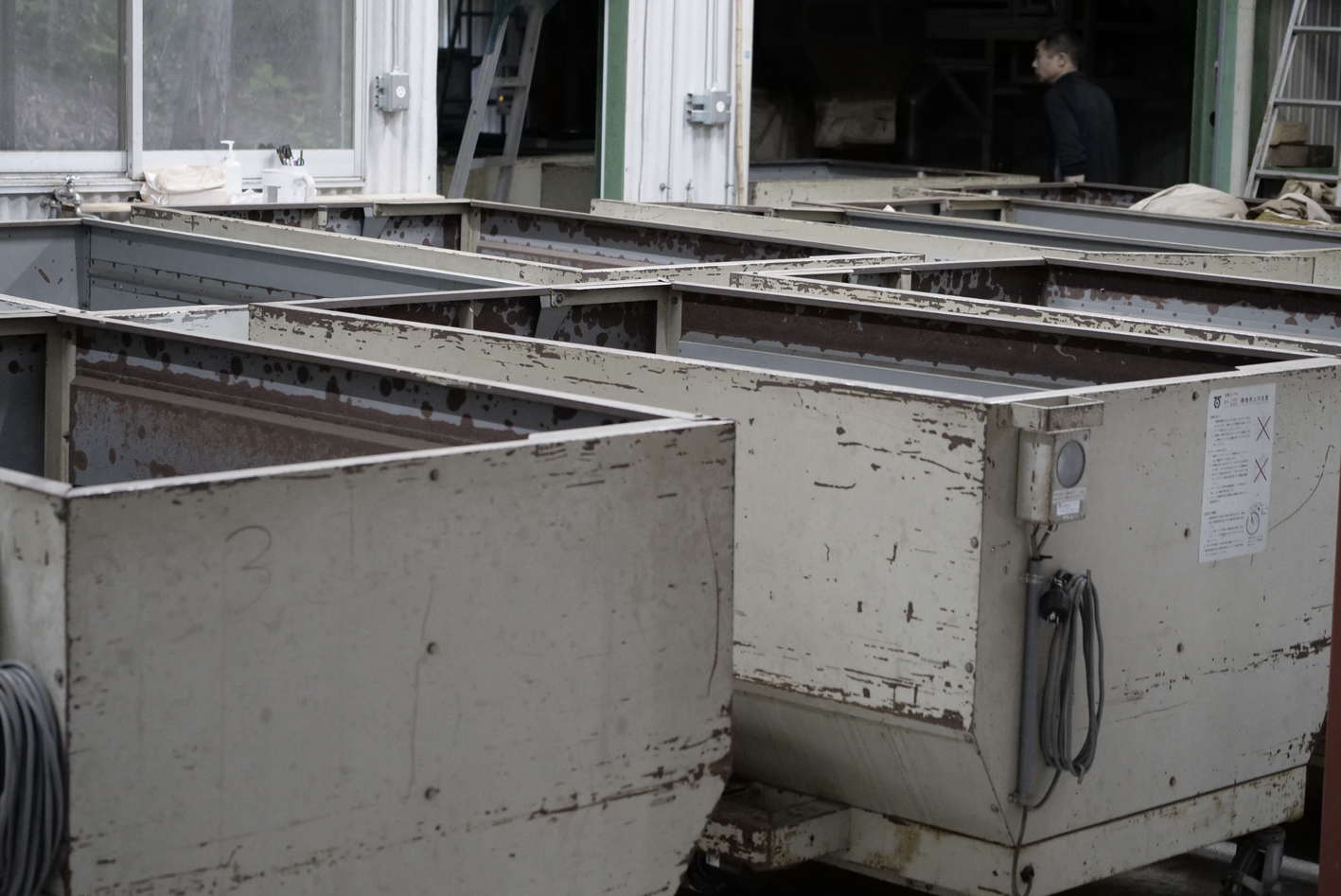
In the part of the tea factory used for black tea production, we find an old machine that tells a piece of Japanese tea history. In the 1950s, when this machine was built, Japan was still a black tea exporting country.

Above all, political crises in the typical black tea countries India and China contributed to a boom in Japanese black tea. However, a black tea culture of its own did not develop domestically. In the 1970s, politicians decided to stop supporting black tea exports because black tea production in other countries resumed and large quantities were made available for the world market at favourable prices, which brought black tea production in Japan to a virtual standstill. Today, there is a revival of Wa-Koucha, Japanese black tea, and a black tea culture of its own is being built around it. The machine manufacturer for black tea machines almost went bankrupt as a result of this fluctuation. Today, black tea machines are made again on demand. At Suikyo, for example, we can still find a multi-level waving machine from this manufacturer. Fresh tea leaves can be wilted on 5 levels, which is the first step in black tea production. However, Fumiaki only uses a maximum of 3 levels with this machine. He says that otherwise the quality will not be as good.
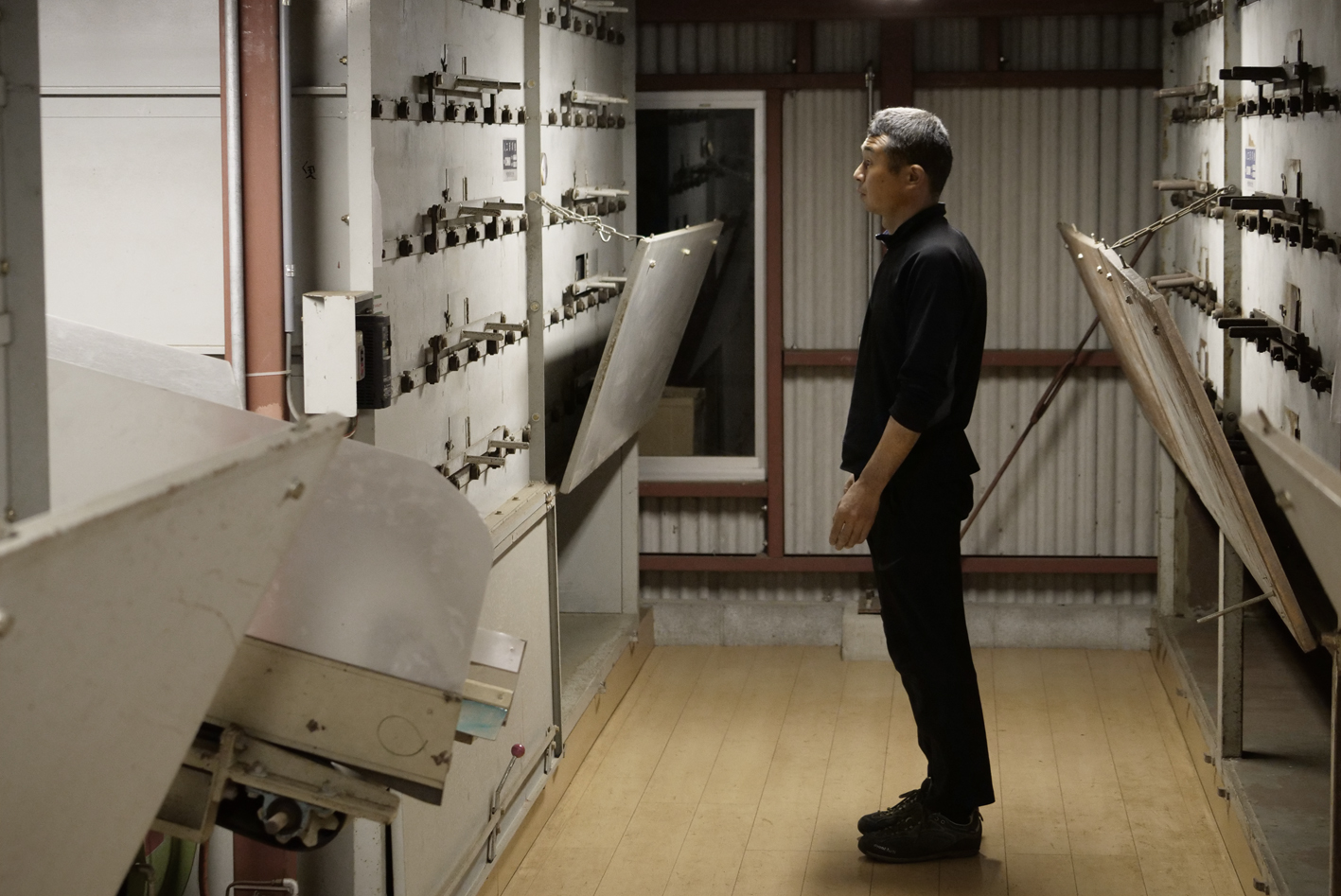
One level up, they have built a false ceiling into the factory in order to have a room for withering in the upper part. Here, the tea leaves wilt in the classic way with only one layer and good ventilation.
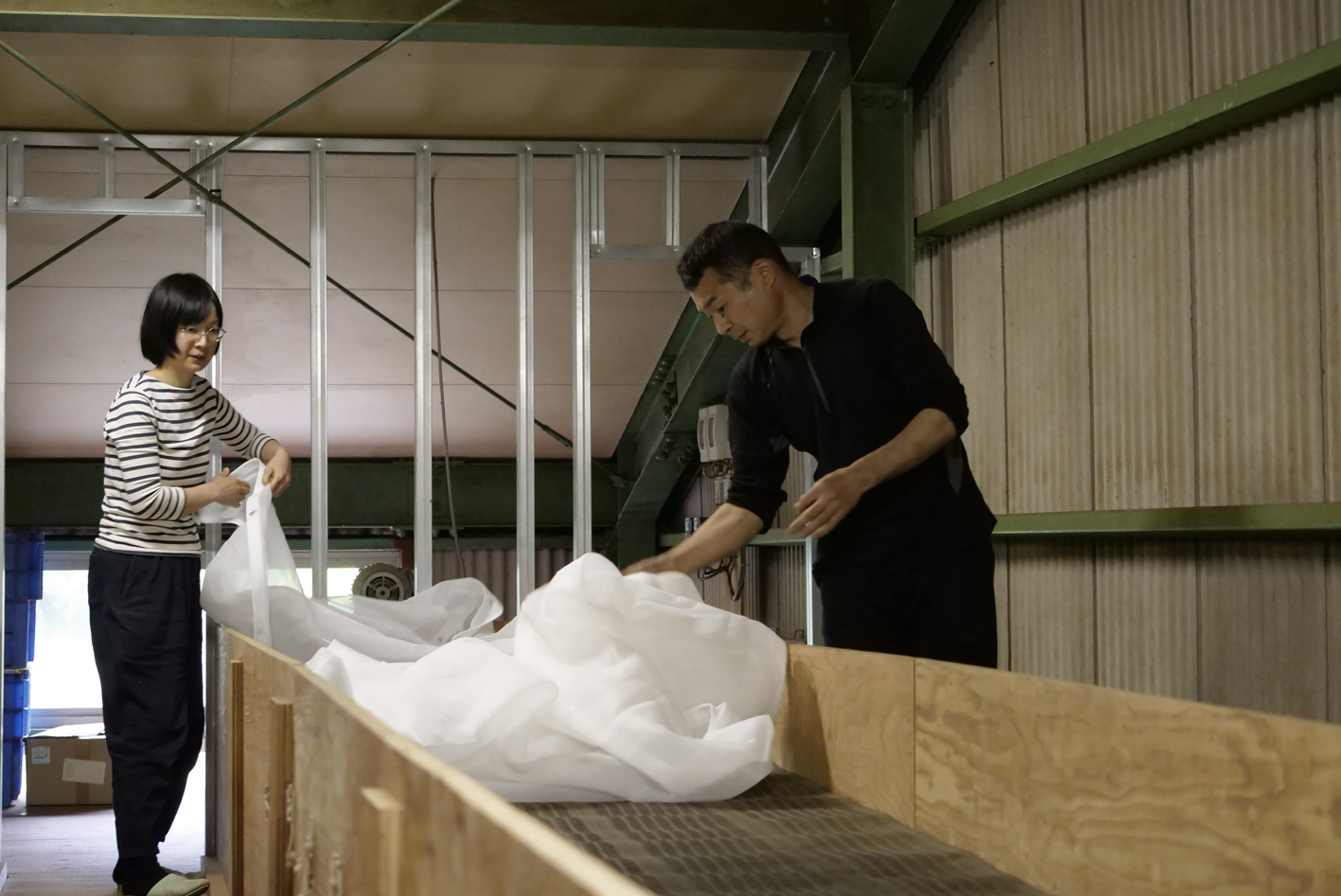
However, these facilities are not used for the wilted green tea Suikyo Woodwind. The green tea is wilted outside in the forest when the weather is nice. We had already described this in detail during our last visit. Fumiaki says that this method, even though it is very laborious and weather-sensitive, produces the tea with the best wilting aroma in green tea production.
After we were allowed to see every corner of the factory and were a bit overwhelmed by all the information, we went to Luna and Fumiaki’s house to make plans for the future, to discuss new teas, but also to fortify ourselves a bit. Spring is always a wonderful time for sansai (mountain vegetables). This includes warabi (fern shoots), which often grow around the tea gardens, as well as mugwort-like plants, which are then fermented or made into tempura. Well fortified and with our heads full of interesting information and ideas, we leave this picturesque area to return to our home base in Kyoto.


